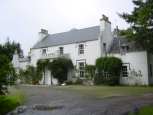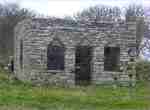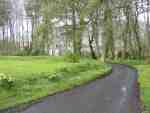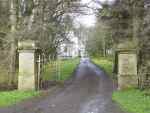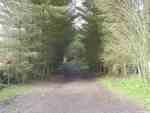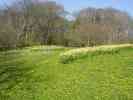 | Caithness.Org | Community | Business | Entertainment | Caithness... | Tourist Info | Site Map |
• Advertising • Chat Room • Contact Us • Kids Links • Links • Messageboard • News - Local & Scottish • News - UK & News Links • About / Contact Us • Submissions |
• Bookshop • Business Index & News • Jobs • Property For Sale • Property For Rent • Shop • Sutherland Business Index |
• Fishing • Fun Stuff • George, The Saga • Horses • Local Galas • Music • Pub Guide • Sport Index • What's On In Caithness |
• General Information • B & Bs • Backpackers • Caravan & Camping • Ferries • Getting Here • Holiday Letting • Hotels • Orkney • Pentland Firth • Sutherland • Taxis |
| N E W S F E E D S >>> |
|
Thrumster House Thrumster House David Brodie was responsible for the construction of the Whaligoe Steps, and the planned village of Sarclet just north of Whaligoe. This was an era when much Government effort went into creating new employment outside the influence of the great clans, in order to keep the people’s mind from further rebellion after the two main Jacobite risings. Many coastal areas saw substantial investment in fishing, flax weaving and other settled occupations, which brought new prosperity to many areas. Sir John was a good government man, and embraced his role in this regard with enthusiasm. Davis built his house on a symmetrical plan, consisting of two back-to-back blocks, with a wing to each side, and this is still obvious, in spite of later additions. It was the first house in Caithness to have sash windows, an innovation which attracted great attention at the time. The main house consisted of three floors, and sunken cellars to the rear. Servants’ quarters were located in the top floor, bedrooms on the ground floor, and the more public rooms above. In the 18th century, it was customary to leave a bedroom door downstairs not quite shut, so that guests about to pass upstairs might observe, through the gap, the presence of a bed with rich hangings, which was a great status symbol, even for the gentry of the day. In 1812, Sir John, feeling the want of money, sold a great many of his Caithness lands, and Thrumster was bought by James Innes, a tenant of Sir John at Keiss, a scion of a once powerful family in the County, whose fortunes had recently been restored by his young brother, George, who had accompanied his employer, Basil Cochrane, to India. Basil traded in alcohol, which he sold to the army in Madras. His story is not difficult to follow, as he fell foul of the military authorities and the East India Company with great regularity, and his exploits are thoroughly covered in Court reports of the time. George returned, a very sick man, and died in Portsmouth at the early age of 24. He had used his short time in India to amass a small fortune, which he left to James, and so they became lairds once more. James’ first three sons died young, two being killed in the Peninsular Wars, and the fourth son, Robert became his heir. He planted trees around the house, and these must have been a great curiousity at the time. Robert married Henrietta Wemyss of Southdun, a grand-daughter of Lord Duffus, and they had one child Henrietta. Six weeks after the birth, Robert’s young wife was dead, of measles, and Henrietta was brought up by her formidable Aunt Anne, who kept a very strict hand on her young charge. Henrietta grew up with
rather grand ideas, and immediately after her marriage in 1863 to
Frederick Bentley, who changed his name to Bentley-Innes in recognition
of his marrying such a great heiress, she set about spending his money
as fast as she could. Dresses were bought from the most fashionable
Paris houses, and Henrietta and her husband travelled around Europe in
the best style. The Hall was designed to
allow Henrietta and Frederick to indulge their love of music and
performance, and they gave frequent concerts for their friends and
tenants. They were enormously popular, and took great interest in local
affairs. My parents took it over in 1952, and it has been a much-loved home ever since. My mother, Lady Jessamine Harmsworth died in 1994, and, apart from my own visits, it is was largely unused. However, the house now plays host to visitors who can enjoy its special ambience, as sporting holiday guests and I hope very much to return it to the happy place I always remember, with the sound of laughter and music, and of people enjoying the surroundings and the many very special delights of the County of Caithness. We hope very much that many people will enjoy a visit to our unique and fascinating part of the highlands, and take home many good memories. Isla MacLeod See Also |

